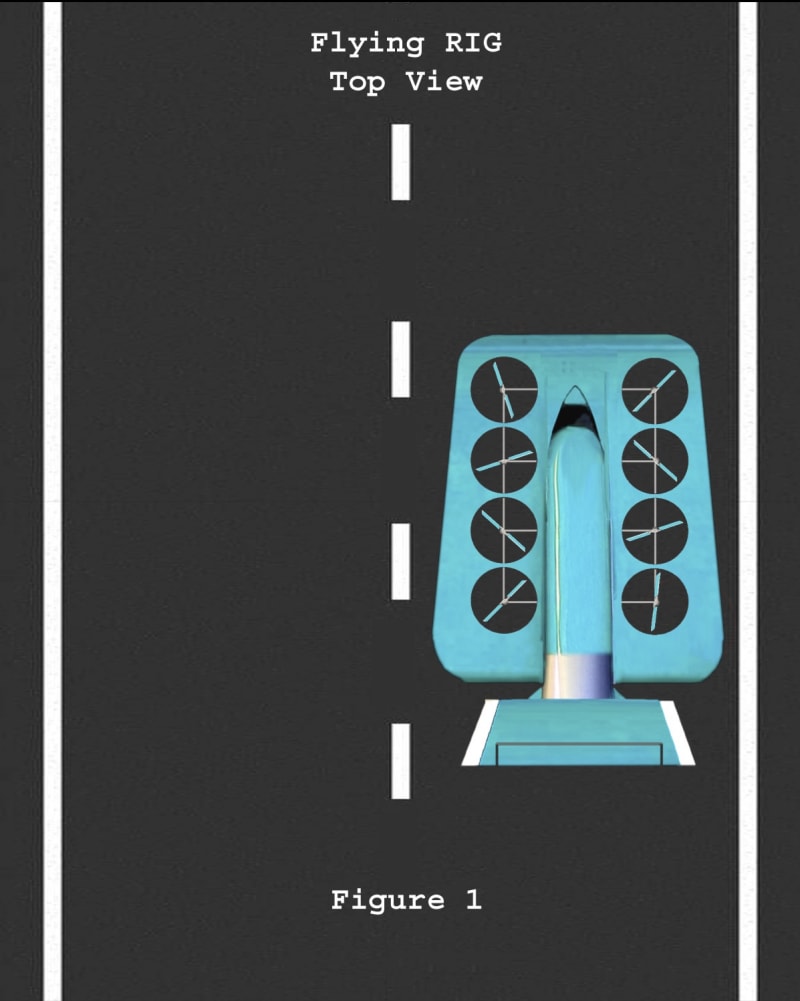Potholes and bumps in the road won’t matter anymore. You can replace your car, boat, snowmobile, and troop-carrier with a single vehicle. Though the long dreamed-of flying car has eluded us for decades, by modifying our vision of a flying car, we can make it a reality.
Consider a plane coming in for a landing. As the wing approaches the surface, vortices develop which suddenly lift the plane, startling student pilots. This increase in lift is known as ground effect. Vehicles known as “Wing in Ground” effect, or WIGs, have been built to take advantage of this effect. With special wings, they fly continuously in ground effect, just a few feet above the surface. Perhaps the most famous of these is the Soviet Union Ekranoplan, built for their navy. WIGs, however, are not prevalent for several reasons. They must be made large to maximize efficiency; small ones are not as practical. Second, they need significant distance to get airborne, and they can’t operate in stop-and-go traffic. They exist, but they are considered novelty watercraft.
Ground effect also occurs in conventional rotorcraft (helicopters and gyrocopters) as they descend to the ground. But rotorcraft ground effect vehicles don’t exist, primarily because the lift from ground effect diminishes with forward speed, and the large diameter blades (disk area) of conventional rotorcraft make them impractical on roads. However, the invention I call "Rotors in Ground” effect (RIG), makes this type of vehicle practical.
My innovation incorporates several unique features. First, multiple in-line rotors are used. The rotors are not powered as in a helicopter, eliminating complex collective and cyclic rotor control. Instead, the simple, proven gyrocopter flapping hinge rotor design is employed. A conventional engine and propeller provide thrust. With multiple rotors, each is small compared to a typical rotorcraft. The required total disk area needed for lift is spread among several rotors in a compact configuration. It is compact enough for a passenger vehicle flying just above today’s roads, and scalable for larger loads. The in-line rotor design helps overcome the loss of ground effect with forward velocity that occurs with typical rotorcraft. Also, existing mathematical analysis in the field suggests that multiple, in-line rotors can substantially increase overall lift. This increased lift, along with flying in ground effect, further reduces the total disk area required as compared to flying out of ground effect.
Small electric motors will be coupled to the rotor system. Inexpensive sensors with motor control algorithms provide flight control. The motors act as pre-rotators, and along with 2-position rotor pitch solenoid control, the vehicle can “jump start” into the air, eliminating the need for a runway. In flight, the motors accelerate or decelerate rotors providing for banking, wind stability, and automated altitude control. Lastly, braking is accomplished with motor regeneration and rotors tilted to “windmill”.
The proposed RIG vehicle is vastly simpler to manufacture than today’s automobile. Remarkably, no new technology or material science breakthrough is required--we just need the vision/courage to make it a reality.
Like this entry?
-
About the Entrant
- Name:Ronald Czerwinski
- Type of entry:individual
- Software used for this entry:MathCad, Photoshop
- Patent status:none





